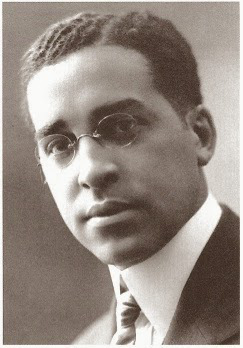Clarence W. Wigington facts for kids
Quick facts for kids
Clarence W. Wigington
|
|
|---|---|

Wigington around 1905
|
|
| Born | April 21, 1883 |
| Died | July 7, 1967 (aged 84) |
| Occupation | Architect |
| Spouse(s) | Viola Williams |
Clarence Wesley "Cap" Wigington (1883-1967) was an amazing American architect who grew up in Omaha, Nebraska. When he was young, he won three first prizes in an art competition. This was at the Trans-Mississippi Exposition in 1899. Later, Wigington became a famous architect across the Midwestern United States. This was a time when there were very few African-American architects.
Wigington was the first black municipal architect in the United States. This means he worked for a city government. He spent 34 years as a senior designer for the City of Saint Paul, Minnesota. The city was building many new structures then. Sixty of his buildings are still standing in St. Paul today. Several of them are recognized on the National Register of Historic Places. Wigington's work is considered one of the most important collections by an African-American architect.
Contents
About Clarence Wigington
Clarence Wesley Wigington was born in Lawrence, Kansas, in 1883. His family soon moved to Omaha, Nebraska. He grew up in the North Omaha area. After finishing Omaha High School at age 15, Wigington left art school in 1902. He went to work for Thomas R. Kimball, a famous architect. Kimball was also the president of the American Institute of Architects.
After six years, Wigington opened his own office. In 1910, the U.S. Census listed him as one of only 59 African-American architects, artists, and draftsmen in the entire country. While in Omaha, Wigington designed several buildings. These included the Broomfield Rowhouse, Zion Baptist Church, and the second St. John's African Methodist Episcopal Church. He also designed many homes for families.
After marrying Viola Williams, Wigington got his first public job. He designed a small brick potato chip factory in Sheridan, Wyoming. He managed the factory for several years.
Working in St. Paul
Wigington became nationally known in Saint Paul, Minnesota. He moved there in 1914. By 1917, he was promoted to senior architectural designer for the City of St. Paul. During the 1920s and 1930s, Wigington designed many buildings. These included most of the Saint Paul Public Schools buildings. He also designed golf clubhouses, fire stations, and park buildings. He even designed airports for the city.
Other famous buildings Wigington designed include the Highland Park Tower. He also designed the Holman Field Administration Building and the Harriet Island Pavilion. All of these are now listed on the National Register of Historic Places. He also designed the Roy Wilkins Auditorium. Wigington was also known for designing huge ice palaces. These were built for the Saint Paul Winter Carnival in the 1930s and 1940s.
His Nickname "Cap"
Wigington was one of the 13 people who started the Sterling Club. This was a social club for black men who worked in jobs like railroad porters and bellboys. He also started the Home Guards of Minnesota. This was an all-black military group created in 1918. This happened because racial segregation meant he couldn't join the Minnesota National Guard during World War I. As the leader of this group, he was given the rank of captain. This is where his nickname "Cap" came from.
Wigington retired from the City of St. Paul in 1949. He then started his own private architecture business in California. He moved to Kansas City, Missouri in 1967 and passed away on July 7 of that year.
Buildings Designed by Wigington
Almost 60 buildings designed by Wigington are still standing in St. Paul. Some important ones include the Highland Park Clubhouse and Cleveland High School. He also designed Randolph Heights Elementary School and the downtown St. Paul Police Station. At the Como Park Zoo, he designed the Palm House and the Zoological Building.
The table below shows some of his notable designs:
| Important Buildings Designed by Wigington | |||||
|---|---|---|---|---|---|
| Name | Location | Built | On NRHP? | ||
| Broomfield Rowhouse | 2502-2504 Lake Street, North Omaha, Nebraska | 1913 | Yes | ||
| Zion Baptist Church | 2215 Grant Street, North Omaha | 1914 | No | ||
| Como Park Elementary School | 780 Wheelock Parkway W., St. Paul, Minnesota | 1916 | No | ||
| Highland Park Tower | 1570 Highland Parkway, St. Paul | 1928 | Yes | ||
| Roy Wilkins Auditorium | 175 Kellogg Boulevard West, St. Paul | 1932 | No | ||
| Holman Field Administration Building | 644 Bayfield Street, St. Paul | 1939 | Yes | ||
| Hamline Playground Recreation Center | 1564 Lafond Ave., St. Paul | 1940 | No | ||
| Harriet Island Pavilion | 75 Water Street, St. Paul | 1941 | Yes | ||
| St. James A.M.E. Church | 624 Central Avenue West, St. Paul | No | |||
| Private residence for Jack G. Butwin | 357 Woodlawn Ave., St. Paul | 1948 | No | ||
Wigington's Legacy
Sixty of Clarence Wigington's buildings are still standing in Saint Paul. Four of them are recognized by being listed on the National Register of Historic Places. His work as an architect is one of the most important collections by an African-American architect.
In 1998, the Harriet Island Pavilion was renamed to honor Wigington. It is now called the Clarence W. Wigington Pavilion.


